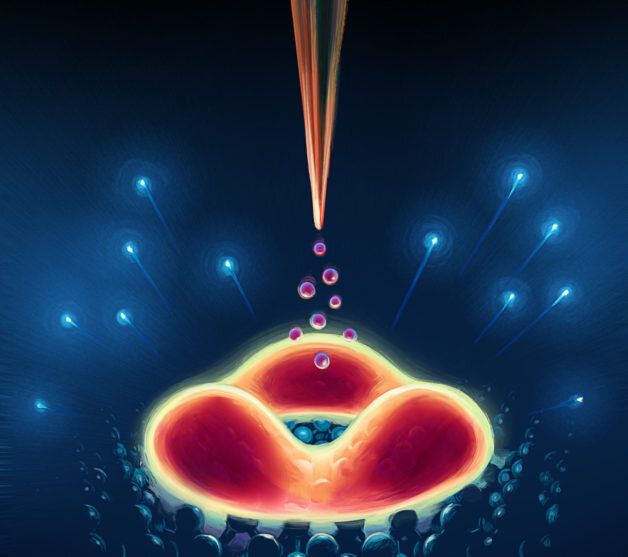Virgin Hyperloop One will test its futuristic technology in West Virginia, where it will build its first certification center. The center will be a proving ground for a hyperloop system designed to whisk floating pods packed with passengers and cargo through vacuum tubes at 600 mph or faster.
SpaceX CEO Elon Musk responded to a fan-made rendering of the company’s most ambitious ship.
Jared Isaacman made a small fortune training fighter pilots but his wealth soared this summer when he took his payments processing business public amid the pandemic.
“This attack demonstrates that, albeit rarely, in exceptional cases, actors are willing to go to great lengths in order to gain the highest level of persistence on a victim’s machine,” said Kaspersky Lab researcher Mark Lechtik in a statement.
The company discovered the UEFI-based malware on machines belonging to two victims. It works to create a Trojan file called “IntelUpdate.exe” in the Startup Folder, which will reinstall itself even if the user finds it and deletes it.
Based on optical matter, new machines could be used to move and manipulate tiny particles.
Researchers have developed a tiny new machine that converts laser light into work. These optically powered machines self-assemble and could be used for nanoscale manipulation of tiny cargo for applications such as nanofluidics and particle sorting.
“Our work addresses a long-standing goal in the nanoscience community to create self-assembling nanoscale machines that can perform work in conventional environments such as room temperature liquids,” said research team leader Norbert F. Scherer from the University of Chicago.
O,.o.
The unmanned vessel washed up in Scotland last week does not belong to the Royal Navy. But it may have been on an intelligence-gathering mission for someone else, along with a second craft found last year.
Secure telecommunications networks and rapid information processing make much of modern life possible. To provide more secure, faster, and higher-performance information sharing than is currently possible, scientists and engineers are designing next-generation devices that harness the rules of quantum physics. Those designs rely on single photons to encode and transmit information across quantum networks and between quantum chips. However, tools for generating single photons do not yet offer the precision and stability required for quantum information technology.
Now, as reported recently in the journal Science Advances, researchers have found a way to generate single, identical photons on demand. By positioning a metallic probe over a designated point in a common 2-D semiconductor material, the team led by researchers at the U.S. Department of Energy’s Lawrence Berkeley National Laboratory (Berkeley Lab) has triggered a photon emission electrically. The photon’s properties may be simply adjusted by changing the applied voltage.
“The demonstration of electrically driven single-photon emission at a precise point constitutes a big step in the quest for integrable quantum technologies,” said Alex Weber-Bargioni, a staff scientist at Berkeley Lab’s Molecular Foundry who led the project. The research is part of the Center for Novel Pathways to Quantum Coherence in Materials (NPQC), an Energy Frontier Research Center sponsored by the Department of Energy, whose overarching goal is to find new approaches to protect and control quantum memory that can provide new insights into novel materials and designs for quantum computing technology.
One of the most remarkable recent advances in biomedical research has been the development of highly targeted gene-editing methods such as CRISPR that can add, remove, or change a gene within a cell with great precision. The method is already being tested or used for the treatment of patients with sickle cell anemia and cancers such as multiple myeloma and liposarcoma, and today, its creators Emmanuelle Charpentier and Jennifer Doudna received the Nobel Prize in chemistry.
While gene editing is remarkably precise in finding and altering genes, there is still no way to target treatment to specific locations in the body. The treatments tested so far involve removing blood stem cells or immune system T cells from the body to modify them, and then infusing them back into a patient to repopulate the bloodstream or reconstitute an immune response—an expensive and time-consuming process.
Building on the accomplishments of Charpentier and Doudna, Tufts researchers have for the first time devised a way to directly deliver gene-editing packages efficiently across the blood brain barrier and into specific regions of the brain, into immune system cells, or to specific tissues and organs in mouse models. These applications could open up an entirely new line of strategy in the treatment of neurological conditions, as well as cancer, infectious disease, and autoimmune diseases.
Armenians face the risk of ethnic cleansing after the eruption of clashes with Azerbaijan and Turkey, two countries with a long history of aggression against them, Israel-based political analyst Uzay Bulut said on Tuesday.
The fighting started between Armenia and Azerbaijan on Sept. 27, marking the biggest escalation in a decades-old conflict over Nagorno-Karabakh, also known as Artsakh. Armenian officials allege that Turkey is involved in the conflict on the side of Baku and is sending mercenaries from Syria to the region.
“Through these assaults, Azerbaijan and Turkey are once again endangering the existence of Artsakh and the survival of Armenia,” Bulut said.









